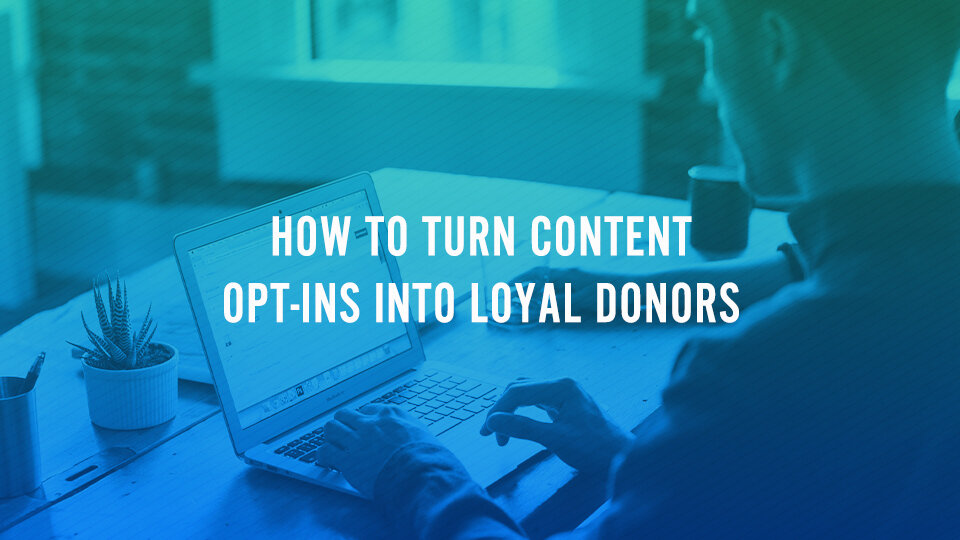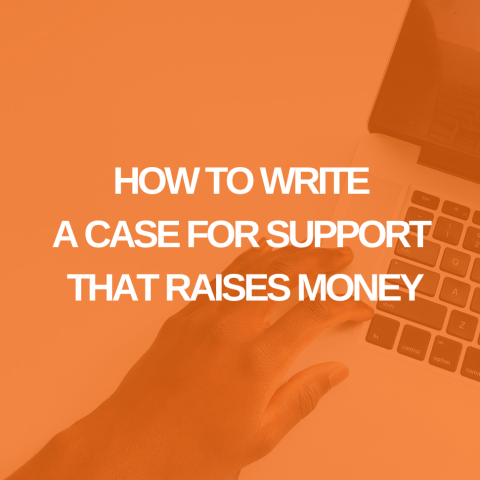How to Turn Email Opt-Ins into Loyal Donors
By Maurilio Amorim
I often hear this phrase: "We have a list of people who just want free stuff. These people are not donors."
While I understand the frustration behind this sentiment, I believe every person can become a donor if appropriately nurtured. In the nonprofit world, converting people who opt-in with a free content offer into dedicated donors can seem challenging.
However, with a well-crafted customer journey strategy, you can systematically nurture this warm audience and guide them toward becoming loyal supporters of your mission. This guide will help nonprofit leaders understand how to use a weekly email series to build relationships and convert leads into donors.
Understanding the Customer Journey
The customer journey is a process that takes individuals from awareness to advocacy. In the context of nonprofits, this journey involves moving people from initial interest in your cause to becoming active donors. Here's how to create a compelling email series to nurture and convert your audience:
Step 1: Welcome Email
Purpose: Introduction and Engagement
Content:
Introduction: Welcome the subscriber and thank them for downloading the free content.
Mission Overview: Briefly introduce your nonprofit, its mission, and the problem you aim to solve.
Next Steps: Encourage them to look out for future emails where you'll share more about your impact and ways they can get involved.
Step 2: Educational Content
Purpose: Build Trust and Inform
Content:
Educational Guide: Share in-depth information related to the problem your nonprofit addresses. This could be an article, video, or another downloadable guide.
Success Stories: Highlight stories of individuals or communities your nonprofit has helped.
Call to Action: Invite them to learn more about your programs or attend an informational webinar.
Step 3: Problem-Solution Email
Purpose: Showcase Impact
Content:
Problem Explanation: Detail the specific problem your nonprofit tackles.
Solution Highlight: Describe how your nonprofit solves this problem and the positive outcomes.
Visuals: Use infographics or videos to illustrate the impact.
Call to Action: Encourage them to follow your social media channels for regular updates.
Step 4: Community Building
Purpose: Foster a Sense of Belonging
Content:
Community Stories: Share testimonials from volunteers, donors, and beneficiaries.
Behind-the-Scenes: Offer a glimpse into the daily operations of your nonprofit.
Engagement Invitation: Invite them to participate in online forums, Facebook groups, or local events.
Step 5: First Soft Ask
Purpose: Introduce the Concept of Giving
Content:
Impact Report: Share a report on how donations have been used effectively in the past.
Soft Ask: Suggest a small, one-time donation with a specific impact, e.g., "$10 provides clean water for a family for a week."
Reassurance: Emphasize that even small contributions make a big difference.
Step 6: Deep Dive into Programs
Purpose: Deepen Understanding
Content:
Program Details: Provide detailed descriptions of your key programs.
Case Studies: Highlight case studies demonstrating your programs' success.
Volunteer Opportunities: Encourage them to get involved as volunteers.
Step 7: Stronger Ask
Purpose: Encourage Donation
Content:
Urgent Need: Explain a current urgent need and how donations can help.
Matching Gift Campaign: If possible, introduce a matching gift campaign to double the impact of their donation.
Donation Link: Provide a clear and easy-to-use donation link.
Step 8: Gratitude and Recognition
Purpose: Appreciate and Engage
Content:
Thank You Message: Send a heartfelt thank you to those who donated.
Impact Update: Share an update on how their donation makes a difference.
Recognition: Recognize donors on social media or in your newsletter (with their permission).
Step 9: Ongoing Engagement
Purpose: Maintain Relationship
Content:
Monthly Updates: Provide regular updates on new projects, success stories, and upcoming events.
Exclusive Content: Share exclusive content or early access to events for your email subscribers.
Recurring Donation: Encourage them to become recurring donors by highlighting the benefits and impact of sustained giving.
Creating a Content Calendar
To ensure consistency and effectiveness, create a content calendar outlining the topics and timing of each email. Here's an example:
- Week 1: Welcome Email
- Week 2: Educational Content
- Week 3: Problem-Solution Email
- Week 4: Community Building
- Week 5: First Soft Ask
- Week 6: Deep Dive into Programs
- Week 7: Stronger Ask
- Week 8: Gratitude and Recognition
- Ongoing: Make them part of your regular communication strategy.
Converting opt-ins into donors requires a strategic and systematic approach. By following this customer journey strategy, you can nurture your audience effectively, build trust, and inspire them to support your nonprofit's mission.
Remember, the key is to provide valuable, engaging content that resonates with your audience and to make the donor the hero of the story. Start implementing these steps today and watch your donor list grow.














